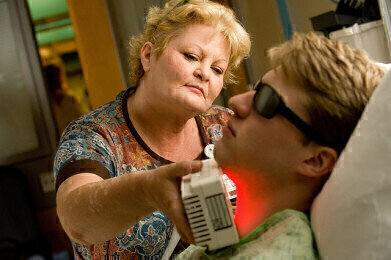News
NASA’s Top 10 Medical Breakthroughs
Nov 21 2015
Mention the word ‘NASA’ and most people generally conjure up thoughts of ultra-advanced space ships, otherworldly astronauts and intergalactic missions. But did you know that the National Aeronautics and Space Administration is also the architect behind a plethora of modern medical revelations that everyday people encounter on a daily basis? From domestic medicine cabinets to cutting edge hospital inventories, NASA’s influence can be found almost everywhere!
The agency’s role in medical breakthroughs is no coincidence, with the 1958 establishment of NASA going hand in hand with a Congress requirement that it share new information with the American governments. It was also granted permission to patent new inventions and assist businesses in developing commercial uses for them.
Over the past four decades this has led to a myriad of innovations. Some have been the result of partnerships with researchers, some have stemmed internally from new space and astronaut technologies while others have been externally developed by third parties. Commercial use of NASA inventions are published every year in the annual "Spinoff" report.
So what progressive inventions has NASA been responsible over the course of its existence?
Magnetic Resonance Imaging (MRI)
While NASA didn’t invent MRI technology, its Jet Propulsion Laboratory did develop the advanced digital image processing technique designed to enhance photographs of the moon. In turn, this contributed to the invention of computerised tomography such as MRIs and CT Scans.
LVAD (Left Ventricular Assist Device)
Developed in 1995, LVAD saw Johnson Space Center engineers work in conjunction with Dr. Michael DeBakey to create this artificial heart pump that draws on technology intended for space shuttle fuel injectors.
Light Technology
As part of the agency’s Marshall Space Flight Center Innovative Partnerships Program, a series of successful clinical trials led to the use of light technology as a means of reducing the pain experienced by cancer patients undergoing chemotherapy and radiation treatment. Amazingly, the experiments were originally used for space shuttle plant growth research.
NASA has also pioneered a plethora of other medical advancements, including:
- Digital imaging breast biopsy systems that spurred from Hubble Space Telescope research
- Miniscule transmitters that actively monitor foetus inside the womb
- Fiber-optic catheters have led to the development of laser angioplasty
- Fiber optic forceps allow doctors to measure the pressure endured by a baby's head during birth
- The materials used to manufacture body temperature lowering cool suits were originally developed for space shuttles
- LED technology has been used to assist in brain cancer surgery
- Next generation foam used to insulate space shuttle external tanks has also been used to develop affordable and robust moulds for artificial limbs
- Programmable pacemakers
- A series of medical tools used to conduct cataract surgery
Want to know more about how space technologies intertwine with our lives on planet Earth? ‘Determination of Silver in Ice Cream - Food Monitoring with Direct Solid Sampling HR-CS AAS’ explores the antimicrobial effects of silver, a technique that’s also used by the NASA Spaceshuttle to purify water.
Image via Flickr Creative Commons. Credits: NASA's Marshall Space Flight Center
Digital Edition
Lab Asia Dec 2025
December 2025
Chromatography Articles- Cutting-edge sample preparation tools help laboratories to stay ahead of the curveMass Spectrometry & Spectroscopy Articles- Unlocking the complexity of metabolomics: Pushi...
View all digital editions
Events
Jan 21 2026 Tokyo, Japan
Jan 28 2026 Tokyo, Japan
Jan 29 2026 New Delhi, India
Feb 07 2026 Boston, MA, USA
Asia Pharma Expo/Asia Lab Expo
Feb 12 2026 Dhaka, Bangladesh



















